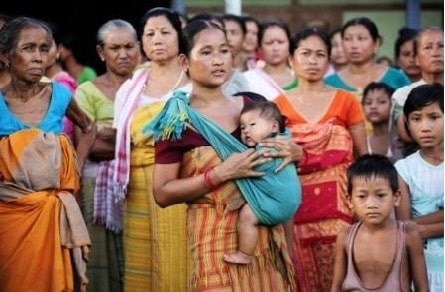
SIFE, which stands for Students in Free Enterprise, is an international non-profit organisation and was incepted in 1975. It began its organisation in the United States. Today, in India SIFE operates as a subsidiary of SIFE worldwide and is one of the 39 countries around the world that comprises SIFE’s premier business and higher education network.
SIFE came to SRCC in the year 2007 and since then it is one of the most active and well known society of the college. Its basic work is to bring together a diverse network of university students and create a better and more sustainable world through the positive power of business. Well-known companies like Boston Consulting Group, The Times of India, FDCI, Punjab National Bank, Max India foundation are its partners. This society finds underprivileged communities and develops a business model for them. It has a team consisting of students from all the three years – the third year students act as advisory members and students from first and second year are allocated duties and responsibilities for completion of their undertaken projects. Till date SIFE SRCC has undertaken 10 projects out of which 4 are still continuing.
The 4 on-going projects namely, Life on Wheels, Kayakalp, Azmat and Aahar have proved to be quite a success. Under project Life on Wheels, SIFE empowers the rickshaw puller community by facilitating ownership of rickshaws. This is done by getting loans sanctioned for the rickshaw pullers from Punjab National Bank and then ensuring successful repayment of the loan amount. At present SIFE has 100 rickshaw pullers and 61 percent loan repayment. Project Kayakalp (meaning rejuvenation) attempts to preserve India’s ancient culture of puppetry while providing the poor artists an opportunity to earn livelihood by showcasing their art to the community. Under project Azmat (meaning dignity), SIFE SRCC identified the existence of manual scavengers in Nekpur near Ghaziabad. The caste system, there, dictates that those belonging to Dalit sub-caste should engage in cleaning dry latrines (non-flush toilets) and carrying human excreta on their heads to disposal grounds. Azmat seeks to rehabilitate these underprivileged people and provide them an alternative source of income. Project Aahar is engaged in providing sustainable source of income to girls rescued from trafficking and helping them to develop culinary skills by providing proper training thus making them independent.
With these projects SIFE SRCC is easily one of the best in DU. It was awarded the second place in the SIFE National Competition in 2011 and third place in 2012. This year (2011-2012) it is working with 57 members and impacting 750 people both directly and indirectly. These figures indicate that SIFE SRCC has huge potential and it will, in near future, bring a significant change in our community.
Aishwarya Chaurasia
[email protected]

